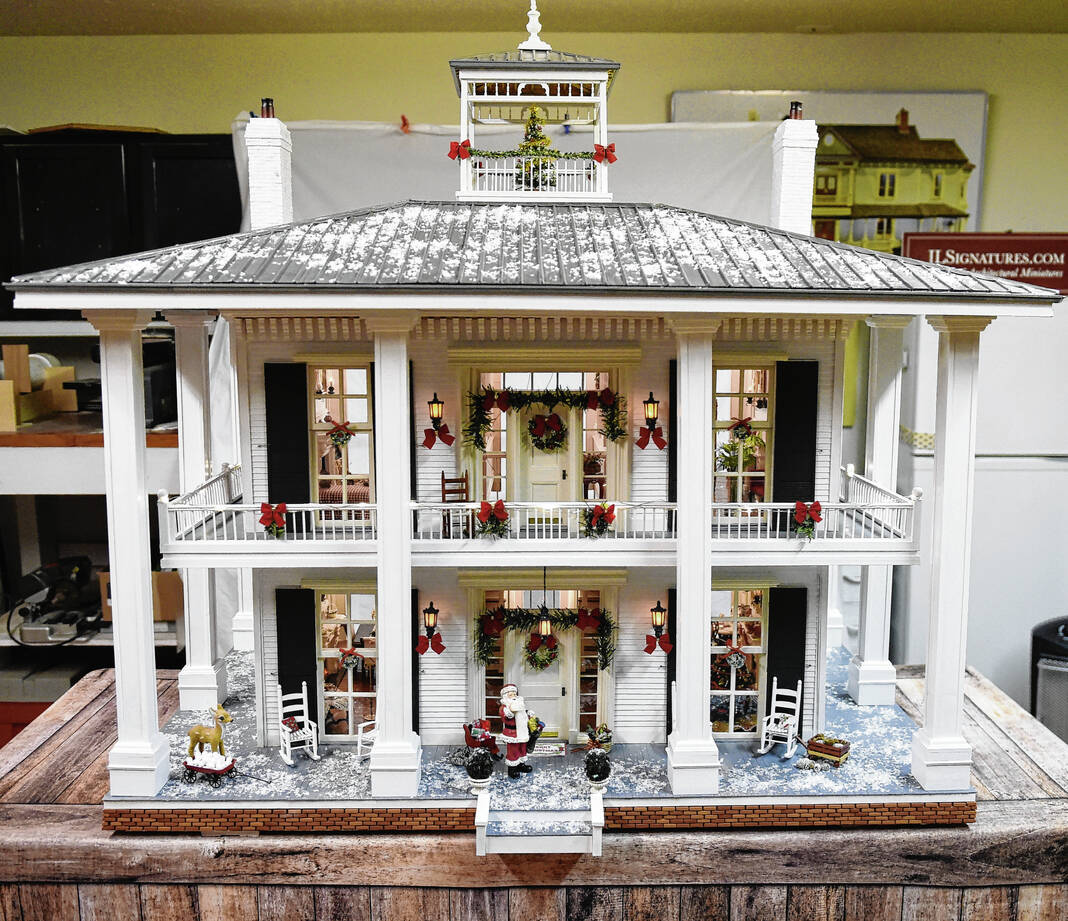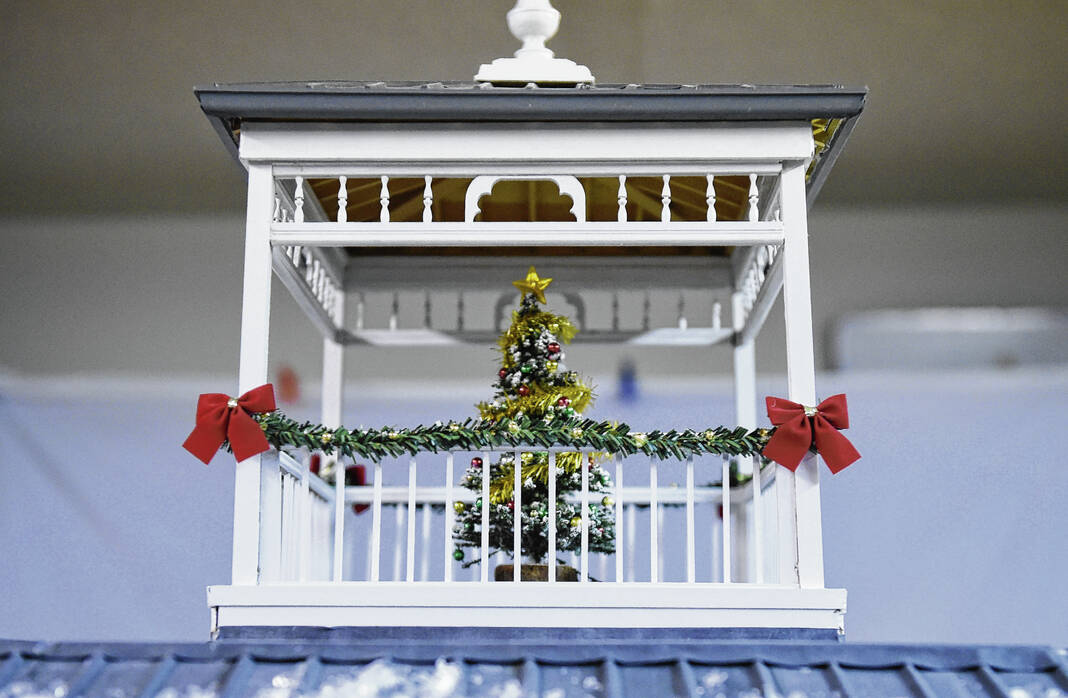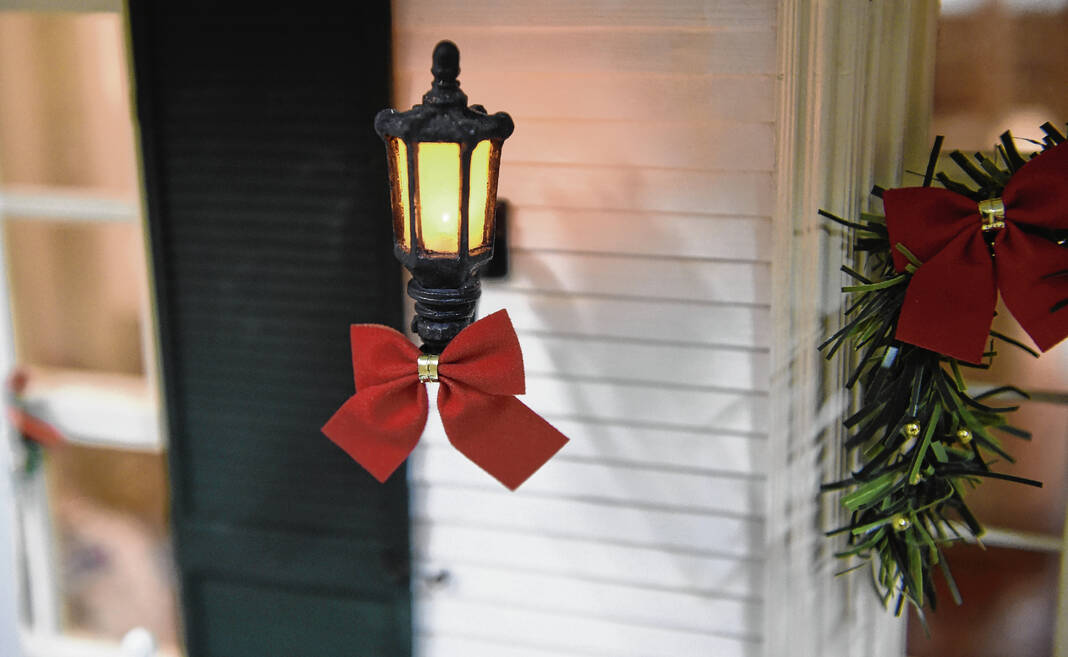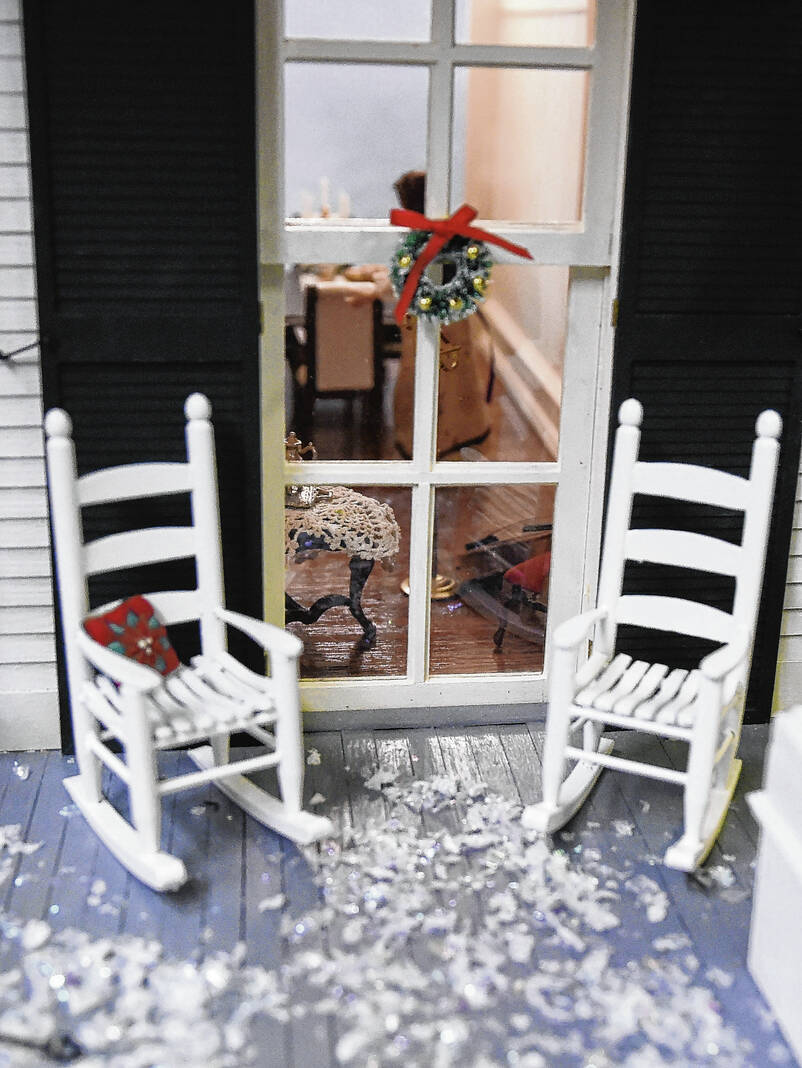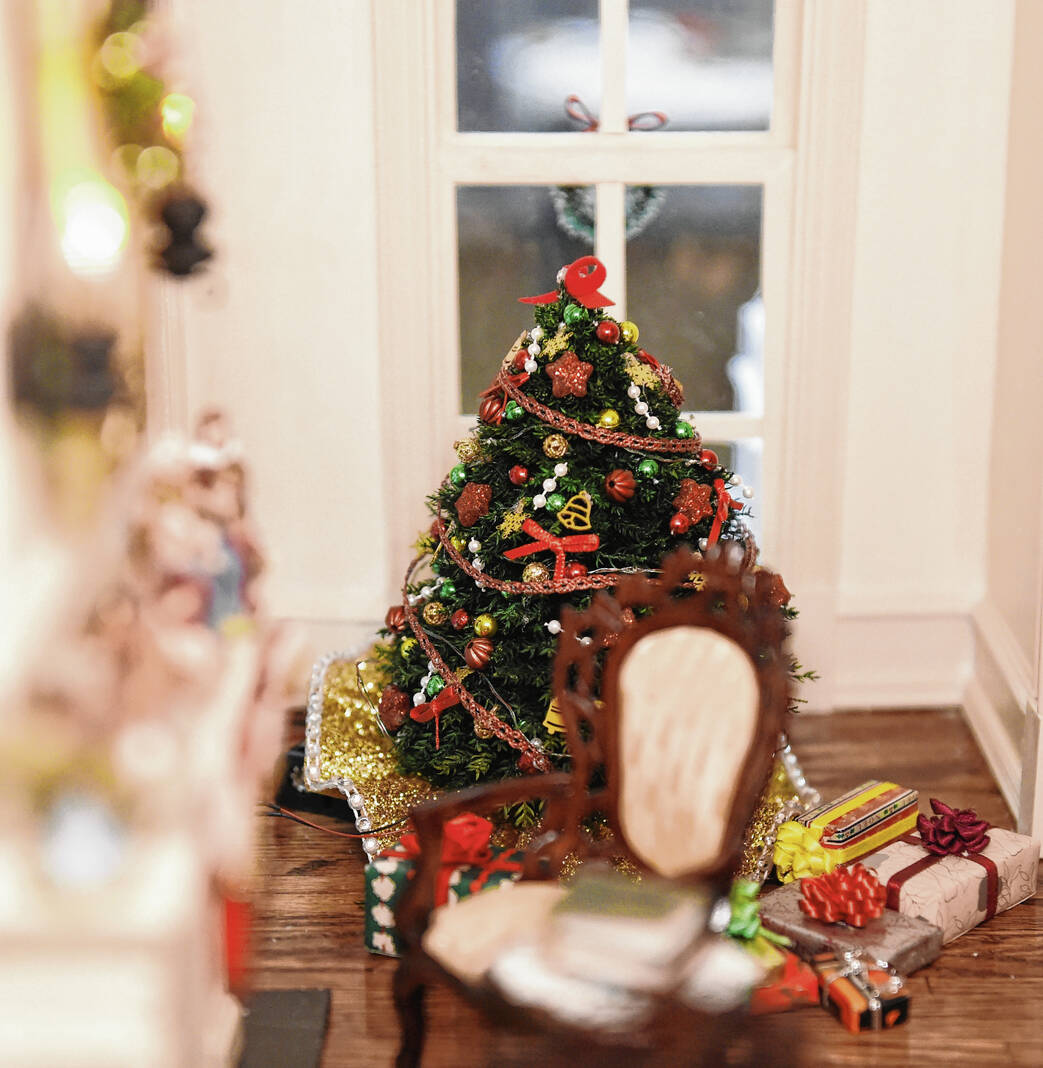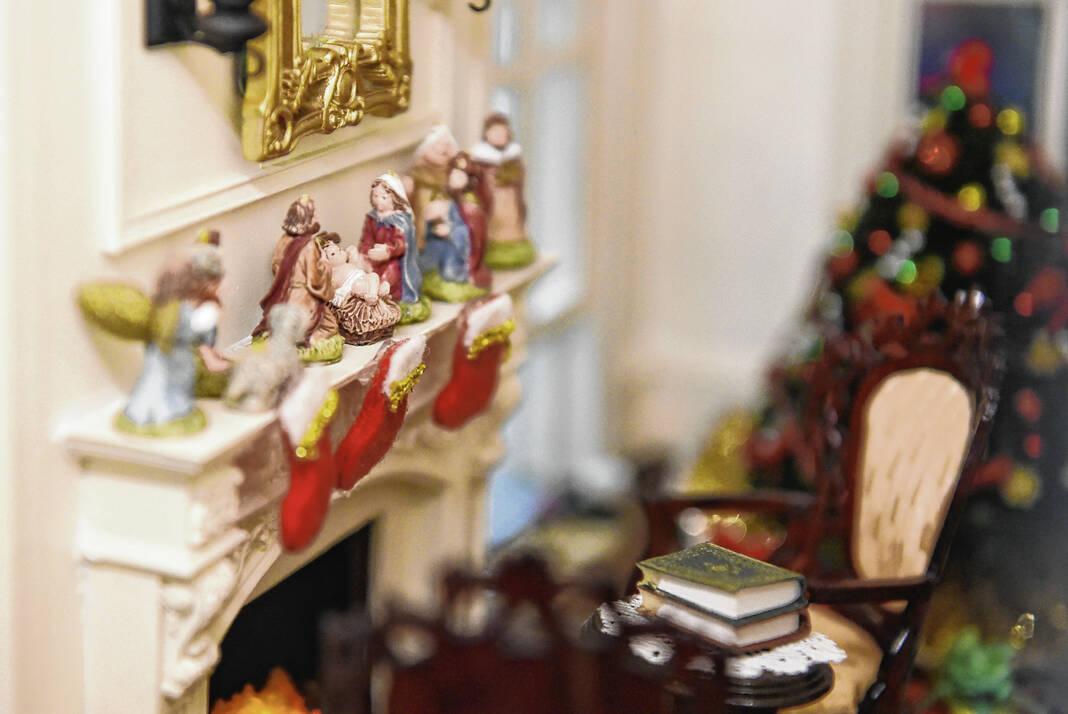The stroke had stolen some short-term memory, and made speaking more difficult.
Jimmy Landers wasn’t sure if it had taken his most beloved hobby — building small scale historic houses. A master of miniatures, the Greenwood resident had crafted incredibly lifelike models for years, ranging from a Victorian doll house to a 1909 general store to a 1891 Tudor home, with a wrap-around veranda.
Following the stroke, his doctor told him to go home and see what kind of woodworking he could still do.
“When you have a stroke, it’s what you don’t know that you don’t know,” he said. “I had no idea if I’d ever build again.”
Landers had not lost his creativity, ingenuity, nor the skill that helped make him a towering figure in the world of miniatures. The work he started following his stroke became an 1830 Colonial mansion, a structure filled with wonderful flourishes such as individual bricks making up the foundation and a genuine metal roof.
He has decked the structure out for the holidays, with wreath- and garland-adorned doors, bows on the balcony, a Christmas tree in the copula and, of course, Santa Claus waving from the front porch.
In its festive decor, the house has been popular with neighbors and the community, giving Landers an opportunity to spread some cheer while showcasing his work, which he hopes to sell.
“I’ve had a dozen of my neighbors already bring their grandkids. They knock on the door every day. A church group was here too,” he said. “It’s meaningless to do all of this if folks can’t see it.”
On a structure bursting with intricate detail, it’s the flickering lanterns illuminating the 1830 Colonial mansion that inspire the most awe.
Landers knew that the next miniature structure he wanted to make was an early 19th-century house. He had grown up in an 1836 Colonial home and loved its look. As with his previous work, the house would have period-accurate furniture, accents and lighting.
But his Colonial would have been built before electricity. So how to replicate the dim, flickering light appropriately, he wondered.
Landers turned to a network of skilled crafters he’s worked with around the world. One was able to create small, metal lamps equipped with flickering amber LED bulbs. The effect would be of a kerosene lamp.
“I had them custom-made for me. I had pulled up the archives and found pictures of it, and the archive replicated it,” he said. “It looks like something that would have been in 1830.”
Landers’s foray into the miniature world started in 2006. A longtime regional manager for an international environmental corporation, the Greenwood resident had retired and was looking for new adventures and projects to fill his time.
His wife had a longstanding hobby of collecting dollhouses, and she asked him to create one for her. Construction came along slowly, but after a year, it was finished, and Landers moved on to his next project.
Since that time, Landers has expanded his focus into different architectural styles for 25 finished pieces. His Helmerich House was a Victorian with a wide and spacious front porch, second-story balcony and incredibly ornate rooms complete with era-appropriate furnishings. The house features eight custom-designed, coal-burning lighted fireplaces, each installed into a marble or granite hearth.
The most stunning aspect is the foyer, with its cherry wood paneling and staircase, working chandeliers with hand-blown glass globes and a stained-glass panel above.
His two-story Linville library features a curved metal staircase, more than 4,000 mini books on display and a vaulted stained-glass skylight. An 1800s hardware store contains miniature bags of floor, pottery, canned goods and everything else people would have needed around the turn of the 20th century.
“It started out as a hobby. After retiring, I was looking for something meaningful to do for the rest of my life. I had success with the first piece, and kept going from there,” he said.
But Landers was unsure he would be able to continue after suffering his stroke in November of 2021. He was in the hospital for seven days, and when he was released, his doctors had determined he had no paralysis.
Still, they were unsure how much he’d be able to do woodworking. They suggested he go home and try to do as much as he could. The 1830 Colonial was started that day.
“My doctor knew that I was a builder, and he recommended I see what I could build,” he said. “So that’s when I started this next house. Completing it told me I could still do it, because I didn’t know. I didn’t know what I’d remember.”
Work on the structure continued for 10 months, though he is still doing touch-up work on it. The Colonial has tell-tale white columns and a two-level veranda porch, with symmetrical windows and doors. Inside, visible through the opening in the back, are fully furnished parlors. A dining table is decorated with a gilded candelabra, while a bedroom has tiny children’s toys set up on the floor.
Fireplaces have been built into each room. A staircase rises in the center of the home.
Landers had an artist create tiny lamps for the interior, which he had found photographs of while researching the Colonial, again using the flickering bulbs.
“Anything can be done in the miniature world, if you have the right artists. And I have access to the right artists,” he said. “I’ve been working with various artists for 17 years, and over that time, you develop a relationship where, no matter what you ask them, they’ll come up with it.”
In December, Landers decorated the house for Christmas, with gifts piled up underneath a grand tree in one room, and a Nativity scene on one of the mantles. Garland and wreaths cover the exterior.
His wife and daughter were in charge of adorning the structure and gave the house a wholesome sense of festivity.
The decor has generated a stir among his neighbors, Landers said.
“I sent this out as a Christmas card this year, and all of the sudden, the phone started ringing — can we come, can we come?” he said.



